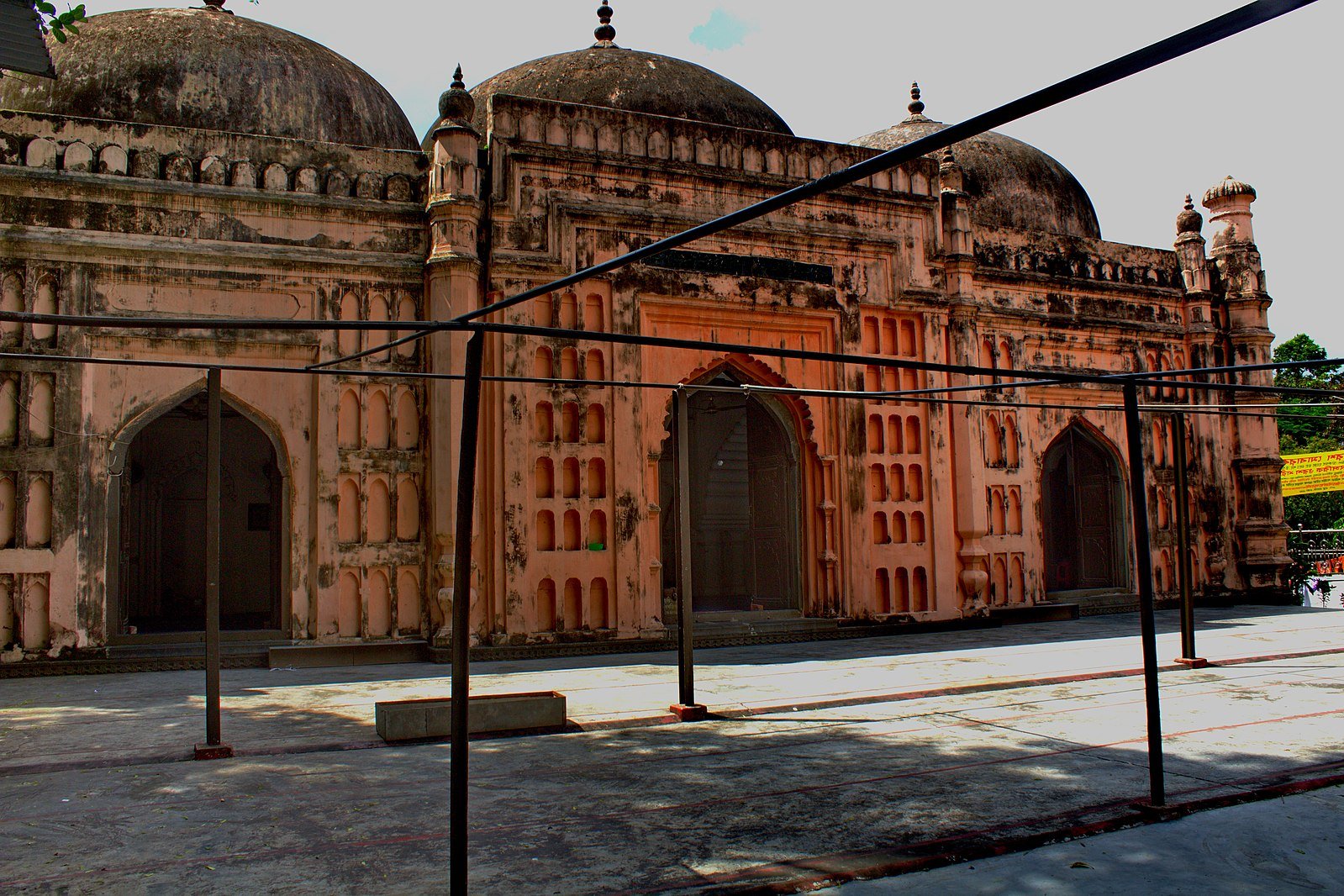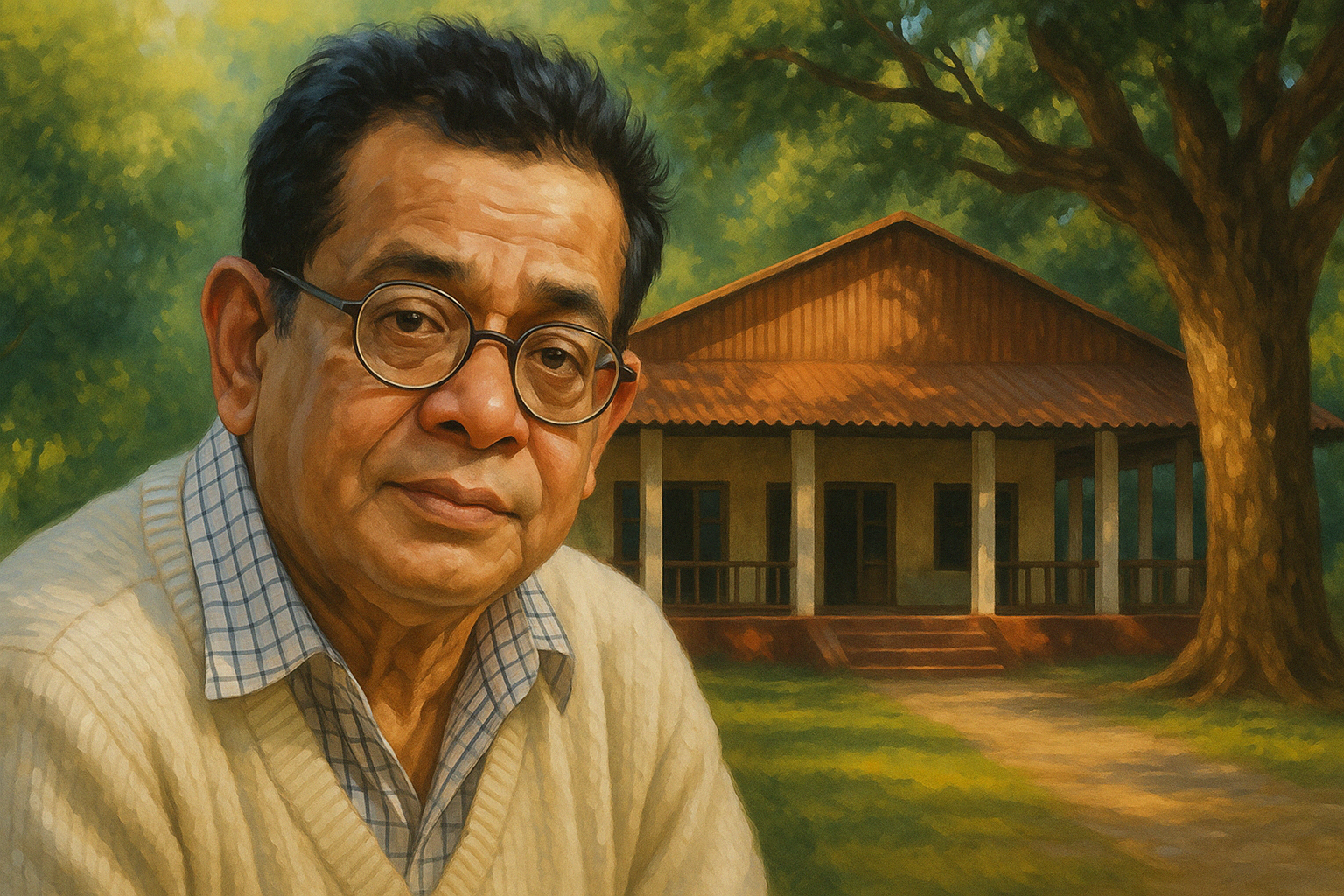The Green Sanctuary: Nuhash Palli and the Mind of a Storyteller
In the heart of Gazipur, surrounded by dense greenery and hushed silence, lies a place that blurs the lines between imagination and reality—Nuhash Palli. More than a retreat, this estate is a living memory of Humayun Ahmed, Bangladesh’s most beloved fiction writer. The sanctuary he dreamed of, designed, and lived in now welcomes visitors seeking peace, nostalgia, and inspiration.
The Birth of a Vision
Back in 1987, Humayun Ahmed began building what would become his most personal creation—Nuhash Palli. Located in Pirozali village, only a couple of hours’ drive from Dhaka, it started as a modest plot but quickly transformed into something far more extraordinary. Named after his son Nuhash Humayun, the place was imagined as a peaceful haven far removed from the chaos of the capital city.
Humayun once described it as his “escape into greenery, silence, and stories.” What began as a farmhouse became a poetic landscape of trees, ponds, bungalows, and sculptures.
A Walk Through the Estate
Spread over nearly 40 bighas (around 13 acres), Nuhash Palli feels like entering a carefully curated dream. The estate is a blend of nature, architecture, and art—all arranged in a way that reflects Humayun Ahmed’s mind and heart.
The moment you step in, a sense of quiet awe settles over you. Lush trees line the winding paths, casting playful shadows on the earth below. Carefully placed benches invite you to sit and take it all in. The air is thick with the scent of blooming flowers, damp leaves, and memories.
Each section of the estate seems to reveal a different mood of the writer—tranquil, whimsical, mysterious, and sometimes even eerie. There are quiet ponds with blooming lotus flowers, whimsical sculptures that feel pulled out of a fairy tale, and thoughtful architectural choices that feel both organic and deliberate.

The Trees That Tell Stories
The estate is home to more than 250 species of plants and trees, including rare medicinal herbs and tropical fruit trees. Each plant has a labeled nameplate, adding an educational touch. Humayun was passionate about botany, and his plant collection is still maintained with great care. The natural ecosystem makes the estate cool and lush year-round.
Brishti Bilash: A Room for Rain
One of the most charming spaces in the estate is Brishti Bilash, a cozy bungalow designed specifically for enjoying the rain. Large glass windows surround the room, making it the perfect spot to sit, write, or simply watch the monsoon wash over the trees. Rain had always been a motif in Humayun’s works—and here, you can feel why.
Bhoot Bilash and Leelaboti Dighi
Not far from Brishti Bilash is a pond called Leelaboti Dighi, named after a character from his novels. Next to it stands a building he jokingly called Bhoot Bilash (The Ghost Palace). It’s quirky, mysterious, and playful—much like his famous supernatural characters.
A Tree House for the Imagination
Tucked between thick clusters of trees and open sky, the tree house at Nuhash Palli is one of the estate’s most charming and symbolic features. Built with natural wood and simple design, it rests atop a large, sturdy tree—blending seamlessly with the greenery around it.
Humayun Ahmed didn’t build this as a showpiece. He built it as a space of wonder. A quiet lookout. A secret hideaway. A place where stories could be imagined, even if they were never written down.
From the top, you get a panoramic view of the estate: leafy trails winding through gardens, fishponds glinting in the sunlight, sculptures peeking through vines, and quiet spots waiting to be discovered. It’s a place where you can climb up, sit still, and feel entirely removed from the world below.
Children visiting Nuhash Palli often squeal in delight upon seeing it, but adults find themselves equally drawn to its quiet invitation. For many, it brings back the simplicity of childhood—the kind of space where thoughts drift, time slows, and curiosity takes the lead.
In the world Humayun Ahmed created, whether through fiction or physical space, the boundaries between age, logic, and fantasy were always blurred. This tree house is a living example of that idea—elevated not just in height, but in spirit.

Art in Unexpected Places
Sculptures are scattered across the property. Life-sized chess pieces, dinosaurs, garden gnomes, and wooden mermaids stand among the greenery. Some installations are humorous, others contemplative. They aren’t placed to impress; they’re there to make you pause, smile, and think.
A Creative Laboratory
Humayun Ahmed wasn’t just a novelist. He was a filmmaker, playwright, professor, and creator. Nuhash Palli was his creative workshop. Many of his dramas and movies were written and even shot here. The estate often became the backdrop for his storytelling—sometimes literally, as with the shooting of “Deyal” and “Shyamol Chhaya.”
Here, stories weren’t only imagined—they were lived.
The Final Chapter
When Humayun Ahmed passed away in 2012, after a battle with cancer, he was buried in Nuhash Palli—as per his wish. His grave rests under the trees, marked by a simple tombstone. Every year, thousands of fans come to pay tribute. People bring flowers, books, and tears. Some just sit quietly, reading one of his novels beside his resting place.
There’s a certain peace in knowing that the storyteller now sleeps where his stories came alive.
Family and Management
After his passing, Nuhash Palli remained a place of significance for Humayun Ahmed’s family. His children, including Nova Ahmed, have visited the estate to honor his memory, and fans continue to cherish its connection to the beloved writer.
The site is now maintained by caretakers who ensure the gardens, structures, and resting place are preserved. It still has the air of a lived-in, loved space—not a cold museum.
Why People Visit
People don’t just come here to sightsee. They come to connect.
Some are readers who grew up with Himu, Misir Ali, or Shuvro. Others are students of literature and cinema. And some just want to breathe in silence. The variety of visitors reflects the depth of Humayun Ahmed’s influence.
Couples come to take wedding photos. School trips are common. Artist’s sketch under the banyan trees. Book lovers sit in circles reading his work aloud. Every inch of the estate offers a moment to pause.
A Living Legacy
Nuhash Palli has become a cultural landmark. It’s not only about Humayun’s personal life—it represents an era of Bangladeshi pop culture that he helped define. His characters—flawed, funny, spiritual, eccentric—were deeply human. This sanctuary mirrors that same spirit.
In a world of digital distractions, Nuhash Palli reminds us of the beauty in stillness, trees, and handwritten pages.
How to Visit Nuhash Palli
Opening Hours: 8 AM to 5 PM daily
Entry Fee: BDT 200 (free for children under 10 and on Humayun’s birth/death anniversaries)
Photography: Allowed
Best Time to Visit: November to February for cool weather; June to August for lush monsoon scenery
More Than a Place
Nuhash Palli is not just about bricks, trees, or sculptures. It’s about feeling. The stillness, the echoes of a writer’s footsteps, the rustle of leaves he once touched—all of it adds up to something timeless.
For fans, it’s sacred ground. For travelers, it’s a hidden gem. For Bangladesh, it’s a cultural treasure.
As you walk past the wooden dinosaurs and through the mango orchards, you can almost hear a voice—quiet, amused, deeply human—whispering a line from a novel you once loved.
And maybe, just maybe, you’ll leave with a story of your own.
Want to explore more hidden gems in Bangladesh?
Check out our guide on 10 Must-Visit Places in Khagrachari for your next adventure.








